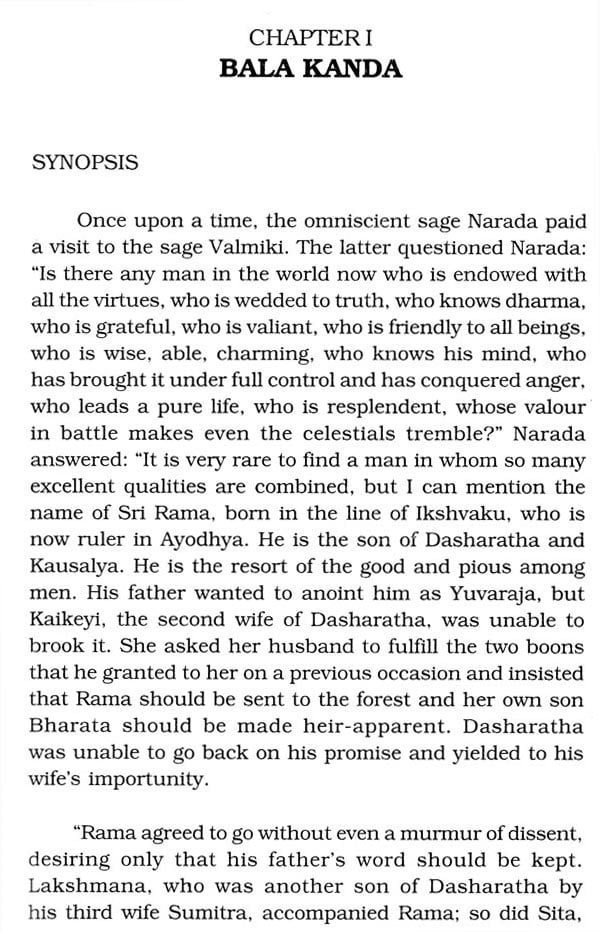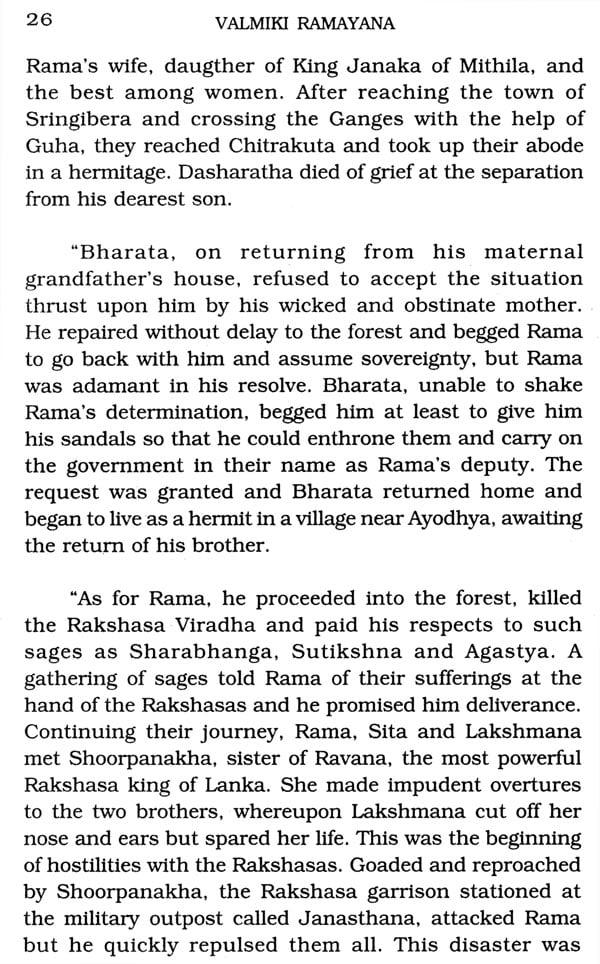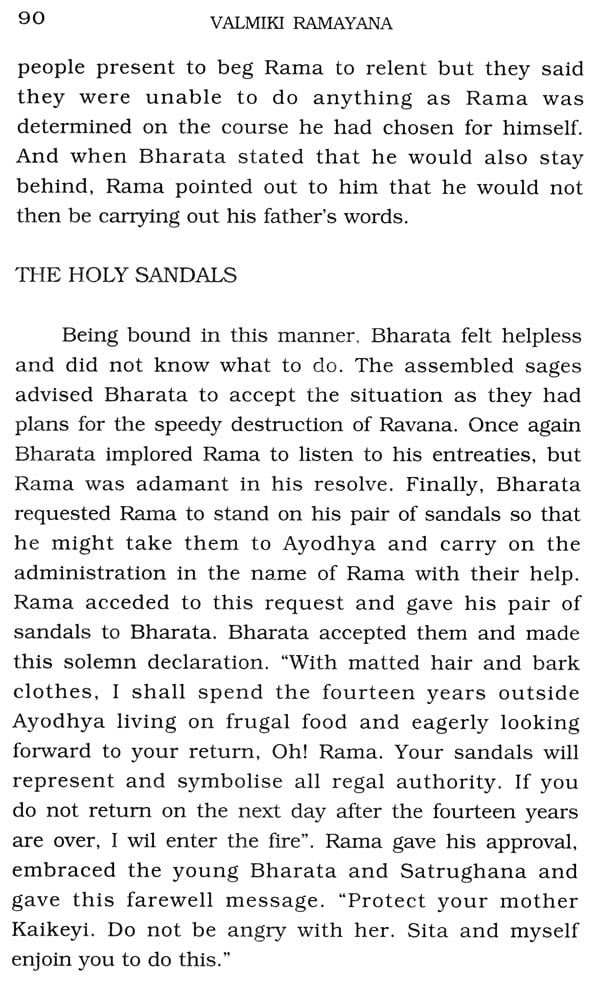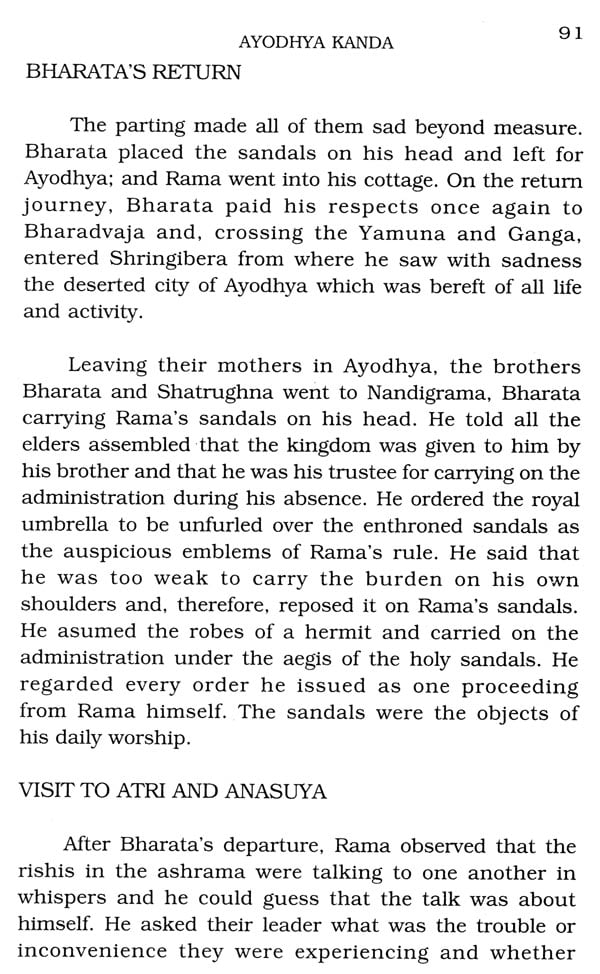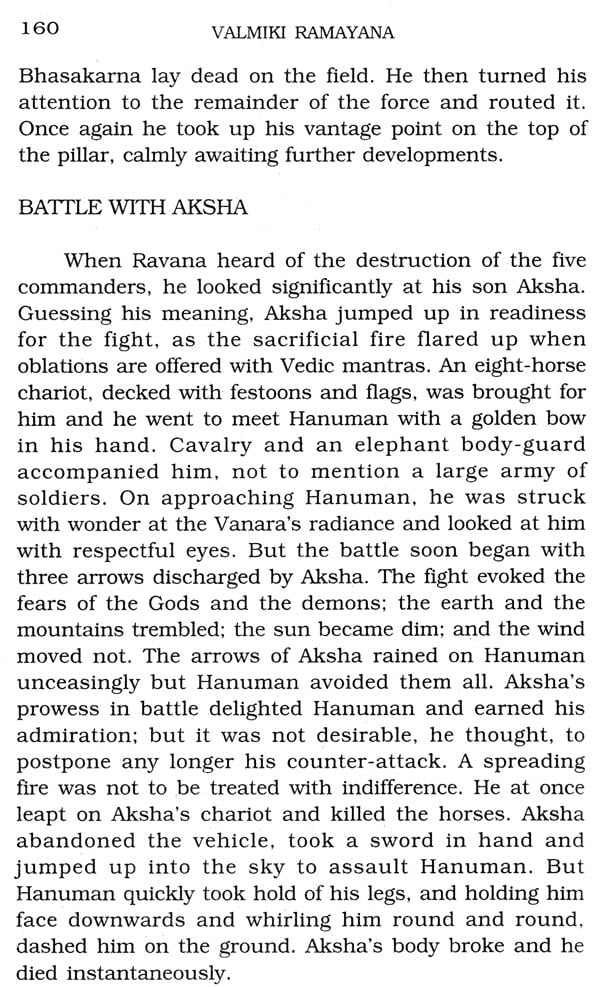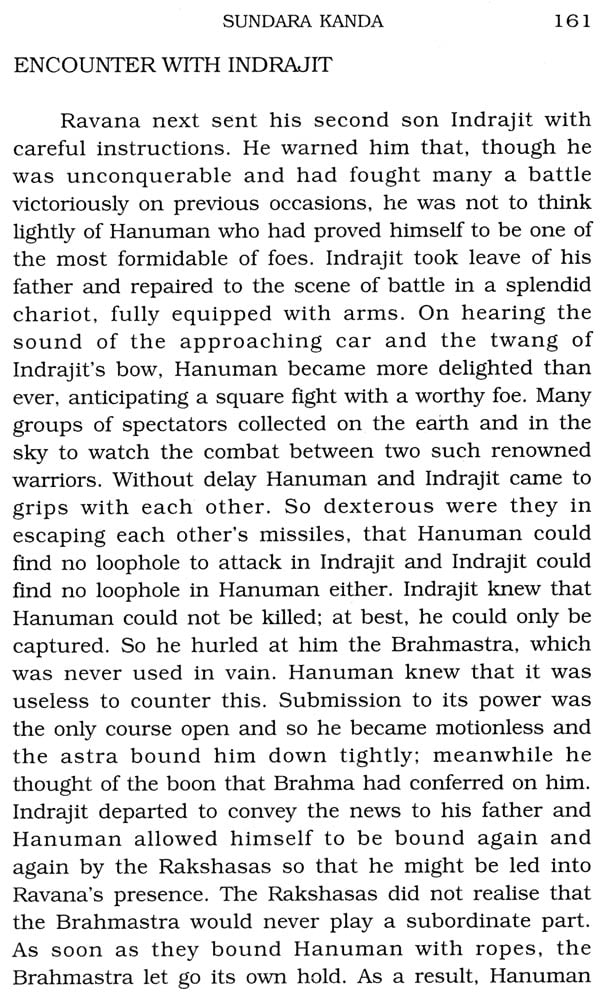
Valmiki Ramayana
Book Specification
| Item Code: | NAU059 |
| Author: | N. Chandrasekhara Aiyer |
| Publisher: | The C. P. Ramaswami Aiyar Foundation, Chennai |
| Language: | ENGLISH |
| Edition: | 2012 |
| ISBN: | 9788190830546 |
| Pages: | 232 |
| Cover: | PAPERBACK |
| Other Details | 8.50 X 5.50 inch |
| Weight | 300 gm |
Book Description
Eminent jurist, scholar and savant, Shri. N. Chandrasekhara Aiyer was born in 1888. His father was a well-known savant and Telugu poet and he himself was an accomplished scholar in Sanskrit, Telugu and English. After a short but successful career at the Bar in Madras, where he started his career as Sir C.P. Ramaswami Aiyar's Junior, he entered the Judicial Service and rose steadily until he occupied a seat on the High Court Bench in Madras in 1941 and later became a Judge of the Supreme Court of India in 1950.
His legal abilities were quickly recognized by the Government of India who nominated him on several Committees of enquiries involving high qualities of impartiality and conciliation of competing interests, such as the All India Industrial Tribunal (Bank Disputes) and the Indo-Pakistan Boundary Disputes Tribunal. He was the Chairman of the Delimitation Commission, India, 1953.
His literary pursuits were uninterrupted by official preoccupations and he devoted his leisure to the popularization of our ancient epics and philosophical classics and their exposition to a new generation.
He wrote the Valmiki Ramayana in English in 1953. He was a sishya of His Holiness Sri Chandrasekhara Bharati, Shankaracharya of Sringeri. He passed away in 1956.
In 1951, Dr. K. M Munshi, founder of the Bharatiya Vidya Bhavan, initiated the Bhavan's Book University, a "series of books which, if read, would service the purpose of providing higher education," with emphasis on "such literature as revealed the deeper impulsions of India." 50 books were taken up initially. The General Editors were Shri. K. M Munshi and Justice N. Chandrasekhara Aiyer. Each book contained 200 to 250 pages.
Shri. K. M. Munshi and Dr. C. P. Ramaswami Aiyar were very good friends and were closely associated in their desire and efforts to propagate Indian Culture. Justice N. Chandrasekhara Aiyer, the author of this book, was Dr. C. P. Ramaswami Aiyar's Junior in Law, and went on to become a Judge of the Hon'ble Supreme Court of India.
Eminent jurist, scholar and savant, Justice N. Chandrasekhara Aiyer was born in 1888. His father was a well-known savant and Telugu poet and he was an accomplished scholar in Sanskrit and Telugu as well as English. After a short but successful career at the Bar, he entered the Judicial Service and rose steadily until he occupied a seat on the High Court Bench in Madras and later became a Judge of the Supreme Court of India. His legal abilities were quickly recognized by the Government of India, who nominated him on several Committees of Enquiry involving high qualities of impartiality and conciliation of competing interests, such as the All-India Industrial Tribunal; Indo-Pakistan Boundary Disputes Tribunal; etc.
His literary pursuits were uninterrupted by official preoccupations and he devoted his leisure to the popularization of our ancient epics and their exposition to a new generation in need of spiritual renovation.
Justice N. Chandrasekhara Aiyer's greatest contribution was the Valmiki Ramayana, written in English for popular reading. Over the years, so many different authors have written their versions of the Ramayana. Valmiki's epic and Narada's story of Rama, which was referred to by Valmiki, have been superseded by later versions that fulfilled local goals. He has narrated the epic using the same division of six books and sub-chapters as used by Valmiki. The Uttara kanda was omitted by him since it was a later interpolation. This book reveals several truths as narrated by Narada and Valmiki: Why did Rama kill Vali? (He had abducted Sugriva's wife); Did he shoot Vali from the back? (No); Did Lakshmana draw a Lakshman rekha? (No); and so on. Justice N. Chandrasekhara Aiyer has remained faithful to Valmiki's epic kavya.
The C. P. Ramaswami Aiyar Foundation decided to republish the late Justice N. Chandrasekhara Aiyer's Valmiki Ramayana, which was originally published by Bhavan's Book University and has been out of print for many years, on the occasion of the Ramayana Festival and Conference, to be held at Chennai in February 2013, by the C. P. Ramaswami Aiyar Foundation.
The Ramayana is a great epic which knows no boundaries of religion or nation. It has taught the values of life and behaviour to men and women over centuries, across India and South-East Asia. There is no finer example in the world of a multi-religious, international culture than the Ramayana. Scores of generations of children have watched performances and narrations of the great epic over 2,000 years, to learn the importance of an ethical life. This has been the cornerstone of life of India and South-East Asia. Many kings in these countries have taken the name of Rama, cities and islands have been named after persons and places in the epic and symbols of Vishnu (whose incarnation was Rama) have been royal emblems across the region.
The story of the Ramayana is enacted more often than any other story in the world. It is performed by Hindus, Buddhists and Muslims. It is the most important cultural tradition of Thailand, Cambodia, Indonesia, Laos, Myanmar, Nepal and India. It has also been widely prevalent in Singapore, Malaysia and Vietnam. The Ramayana is the great bond of culture which unites India and the countries of South East Asia.
The C.P. Ramaswami Aiyar Foundation is happy to publish this book to celebrate the role of the great epic in the culture of India and South-East Asia.
**Contents and Sample Pages**




